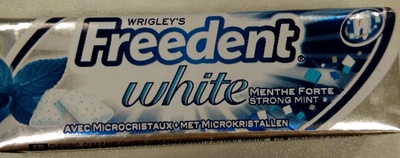White menthe forte - Freedent - 1
This product page is not complete. You can help to complete it by editing it and adding more data from the photos we have, or by taking more photos using the app for Android or iPhone/iPad. Thank you!
×
Barcode: 42070399
Quantity: 1
Brands: Freedent
Categories: Snacks, Sweet snacks, Confectioneries, Chewing gum, Sugar-free chewing gum, Gums
Labels, certifications, awards: Low or no sugar, No sugar
Stores: intermarche\
Countries where sold: France
Matching with your preferences
Environment
Packaging
Transportation
Report a problem
Data sources
Product added on by openfoodfacts-contributors
Last edit of product page on by roboto-app.
Product page also edited by crupuk, derrechef, inf, julie-yuka, kiliweb, kyzh, romgn, scari, tacite-mass-editor, yuka.R2Y0OE1QMFlscUV0cGZSa3p6MzY5TjRxeG9HckFFVG9PZkFBSWc9PQ, yuka.UVA4aE5aOE4rZEF1bHM4a3h3emN5UDFrbUxXd1pFenBOYkE0SUE9PQ, yuka.Uy9nckFKWWZsTUVIbE04MzhnNk13b04zMjRHTFVrU0pHZWMvSUE9PQ, yuka.VFAwdkRLY1IrZE1hcTg4ejREL1IxYzFTL1pHbmQwZVZFT3hQSUE9PQ, yuka.VGFWUUw1cGJxTmtEaXZkbTNDSHMrZXQrNjdHdlpFZXNMOVk4SUE9PQ, yuka.WDRzN05xWUF1dkF2b01FZ3Iwam5wdU5GNnBLb0FVNklGOWcySVE9PQ, yuka.WVp3ZVNvWWN1cWtLeGNROTRBcjQ2dXA0dzc2WlhYTzBOTVFXSWc9PQ, yuka.YS8wQUFmb3RyTk5TZ2ZBZS95Ny94TjByL0lPZ2VsMnJKdTh2SVE9PQ, yuka.YjZ3R0ZKd01pL3RicWNKaHdBdmY4Y0o3M2J1dVhVR3VJdEVESWc9PQ, yuka.ZklrOUw0aGQvTXNQaWZReS96S0p5TzlGd3JYMFUwUytJdThwSVE9PQ, yuka.Zm9ZbEVxVXdnc3NGcGZRNzdDT0V5dWh1MmJId1l6K2FLdXhPSUE9PQ.








